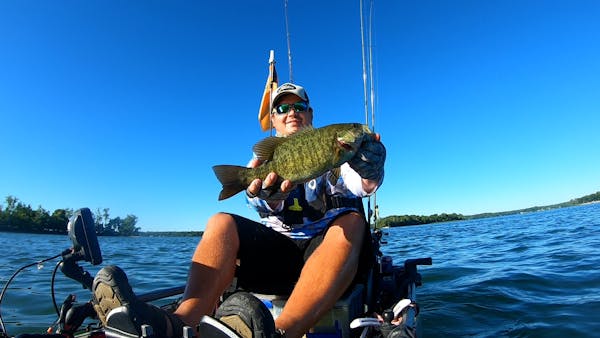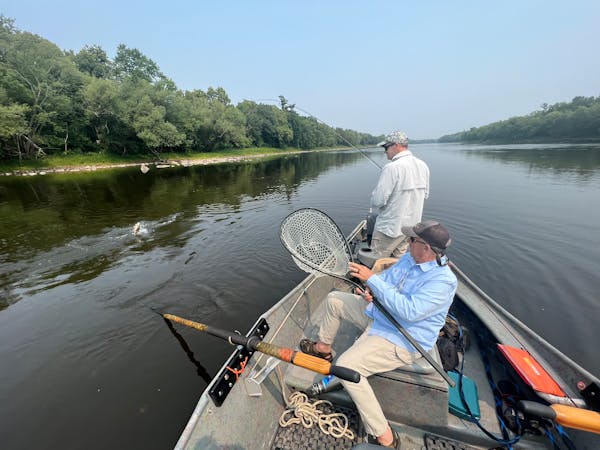Risks are inherent in any activity outdoors, motorized or otherwise. More so when people are doing things without all the skills — such as know-how and awareness.
Conservation officers in the Department of Natural Resources who spend some of their warm weather days patrolling state waters say those two skills are increasingly lacking among personal watercraft (PWC) operators and owners they encounter.
Numbers back it up: Officers have written up more citations and warned more riders through mid-July than the entire 2022 season, ending Oct. 1.
"It amazes me the amount of people that have total disregard for the watercraft regulations or have no idea what they are," said Kipp Duncan, a 22-year-plus officer, in the Duluth area. He called them out in one of his recent weekly area reports published by the DNR's law enforcement division.
There are more personal watercraft
PWCs, like Jet Skis and WaveRunners, made up 8.6% of all registered motorized watercraft in Minnesota five years ago. Last year, there were 60,392 registered, or about 9.8%. Some officers have noticed the uptick and said the violations transcend age group and gender.
Common problem areas
Too close to shore: Duncan encounters many riders, too, who blow through a common rule on most waters: a no-wake speed within 150 feet of shore (that's about three-quarters the length of a hockey rink). Lake Minnetonka's distance is 300 feet for all watercraft, said CO Brent Grewe, who patrols there on a PWC.
Eric Evenson supports the 300-foot rule on Lake Minnetonka, brought forth by the Lake Minnetonka Conservation District. Evenson, the lake association director, said the group backed the change with the goal of providing an extra level of public safety.
"That buffer is of value," he said.
In most cases, local governing bodies will bring a proposed water use provision to the DNR, which the agency exhaustively examines before either denying the proposal or sending it back for the governing unit to take up. The public has access to the lake and river ordinances across the state, some put in place through the process decades ago.
"We're asking: What is going to be in the best interest of the majority of boaters, the lakeshore, the environment?" said Adam Block, the DNR's boating law administrator.
- Late operation: Operators can ride between 9:30 a.m. and an hour before sunset. And it isn't mornings that are the No. 1 issue for Mitch Lawler, who patrols the Alexandria chain and elsewhere on a Sea-Doo RXT 230. He said a minuscule number of people who ride are aware of the pre-sunset cutoff.
"The majority of operators do feel like going out for an evening spin and that is OK — up until an hour before sunset. They've got to be off. They just keep running.
"Any lake I drive by after dinner will have Jet Skis, and when that hour before sunset comes, it doesn't seem like they disperse at all," he said.
Duncan, his colleague in Duluth, said part of his current frustration stems from witnessing reckless behavior during his off-hours when he is recreating with his family. He felt compelled to call out it in the context of public protection.
Lawler said violators mostly are juveniles. They might have their water safety permit, but he said many have no clue about the quiet time law. He said "parents need to know they are not off the hook just because it's their kids out there."
- Too young to operate: Duncan has stopped 10- and 11-year-olds riding illegally. Anyone younger than 13 can't operate, even with an adult on board. Youth 13 to 17 must adhere to rules involving mandatory water safety permits and adult supervision. Lawler said a parent doing a ride-along with an underage driver is illegal and, more importantly, dangerous.
"If you fall off, [a child] is done," he added about the power and tricky, jet-propelled handling of the machines. PWCs can't be steered without hitting the throttle.
Most people who crash them are going at slow speeds, Lawler said, letting off the gas and turning the handlebars and not getting any response.
- Other infractions: Some users don't have or display properly the mandatory rules decal issued by the DNR. Some operators are pulling others illegally. They need either a mirror with a wide field of vision or a spotter aboard to watch the action. Some operators are unaware that they have to slow down while passing within 150 feet of rafts or docks, or nonmotorized craft like paddleboards and canoes.
Lawler said new owners and inexperienced renters who don't know the rules or the capabilities of machines that can hit 75 miles per hour are common. Operators often imply that the dealerships should have done a better job of educating them. His reply: You have to know these things before you do these things.
Evenson, the lake association director, found it ironic that governing bodies are sometimes pressed to ease rules, when current behavior says otherwise.
"It'd be tragic if [operators'] actions turn somebody's weekend into a disaster," he said.

